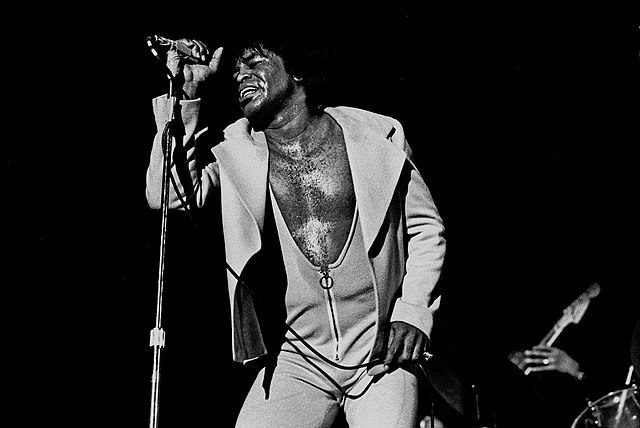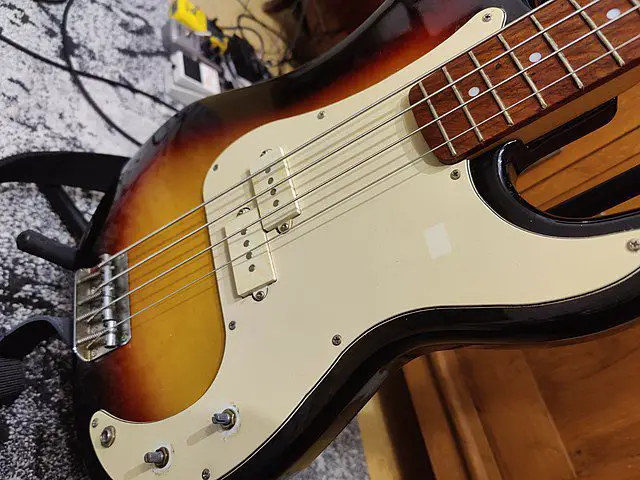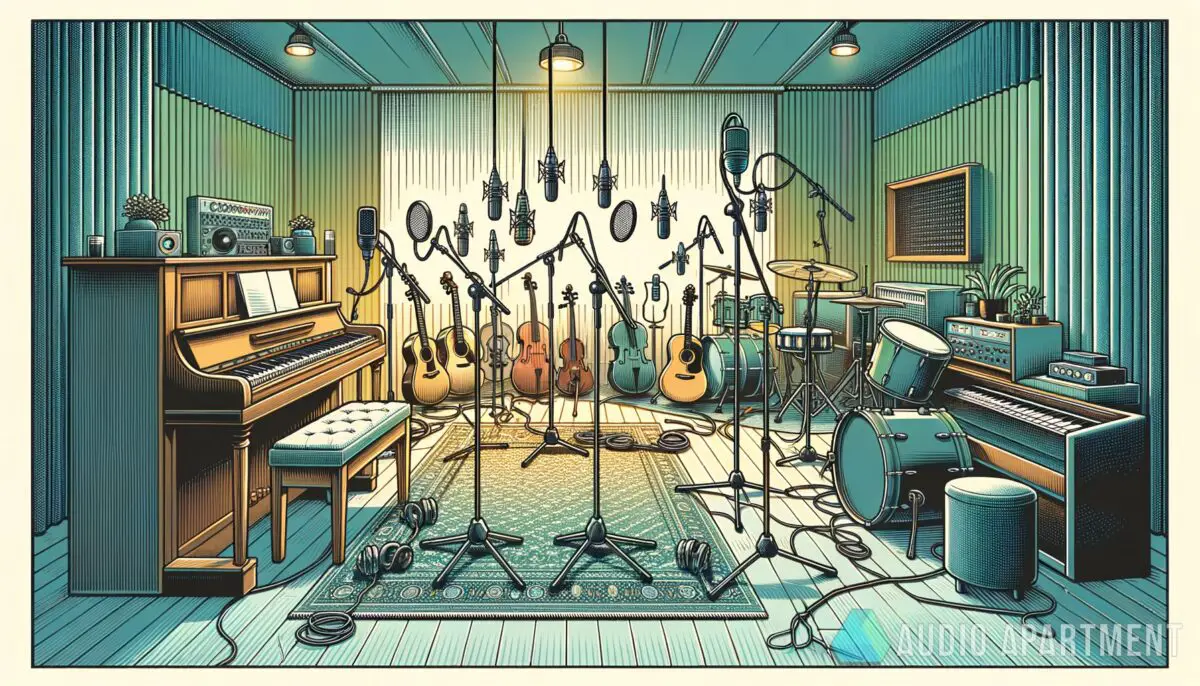Have you ever wondered about the soul behind the irresistibly groovy dance music that gets your feet tapping and body swaying? Welcome to the world of funk! This influential genre revolutionized music scenes globally, turning heads and inspiring countless artists.
What is funk? Funk is a distinct style of dance music that sprung from Black R&B, soul, and jazz scenes in the mid-1960s. It’s characterized by its syncopated bass lines and infectious drum grooves, setting it apart as one of the most popular genres of the ’70s and ’80s.
What makes funk unique and enticing?
With its enticing rhythm and syncopated beats, Funk music has a unique quality that draws listeners in and keeps them hooked. But what elements make this genre so appealing? Let’s dig a little deeper. The heartbeat of funk music is its syncopation—a rhythmic technique that emphasizes off-beats. Nowhere is this more evident than in the guitar and bass lines of quintessential funk hits like “Sex Machine” and “Papa’s Got a Brand New Bag.”

The heartbeat of funk music is its syncopation—a rhythmic technique that lays emphasis on off-beats.
These songs rely heavily on syncopated rhythm guitar, setting a groove that’s easy to move. Moreover, funk is well-known for its strong downbeats, followed by 16th-note grooves. Funk pioneer James Brown was famous for directing his band to play “on the one,” meaning he desired potent downbeat accents. These were followed by catchy 16th-note riffs that filled out the measure, adding to the irresistible groove.
Funk music has a preference for densely voiced chords, specifically 7th chords and their variants like major and minor 9th chords and 13th chords. These chords are often sustained for multiple measures as a player locks into a groove. This characteristic adds another layer of richness to the funk sound.
You’ll find that the bass guitar is a driving force in funk. Artists like Bootsy Collins of Parliament-Funkadelic and Larry Graham of Sly and the Family Stone brought the bass line to the forefront, creating memorable grooves. It’s common in funk for the melody to be downplayed while the bass line takes center stage.
AKAI Professional MPK Mini MK3

AKAI Professional MPK Mini MK3
What were the pivotal moments in funk’s history?
These pivotal moments they have shaped the development and influence of funk music, solidifying its place in music history and inspiring generations of musicians.
| Year | Event |
|---|---|
| Late 1950s – Early 1960s | The late 1960s |
| Late 1960s | Sly and the Family Stone infuse psychedelia into funk |
| Rick James releases the funk hit “Super Freak.” | George Clinton forms Parliament Funkadelic, creating P-Funk by mixing psychedelia and Afro-centric messaging |
| 1970s-1980s | Funk reaches its peak popularity |
| 1970s-1980s | Chaka Khan and Rufus contribute to funk during this era |
| 1981 | Rick James releases the funk hit “Super Freak.” |
| 1982 | Rick James releases the funk hit “Super Freak” |
What are the key characteristics of funk music?
Dive in, folks! Let’s dissect the genre of funk and understand what makes it tick. As an influence on other styles and a standalone genre, funk music carries several identifying traits.
A unique sense of syncopation
Its unique sense of syncopation is the first characteristic that sets funk music apart. This is especially evident in the guitar and bass lines, making the genre irresistibly danceable. Songs like “Sex Machine,” “Papa’s Got a Brand New Bag,” and “Super Freak” rely on syncopated rhythm guitar to establish a groove.
Notably, funk pioneer James Brown was famous for directing his band to play “on the one,” which meant he wanted strong downbeat accents. These downbeats were followed by funky 16th-note riffs that filled out the measure.
Its unique sense of syncopation is the first characteristic that sets funk music apart. This is especially evident in the guitar and bass lines, making the genre irresistibly danceable.
Reliance on densely voiced chords
Another characteristic of funk music is its heavy reliance on densely voiced chords, specifically 7th chords and their variants, like major and minor 9th and 13th chords. These chords are often sustained for multiple measures as a player locks into a groove.
Groovy bass lines drive funk
It’s no secret that the bass plays a crucial role in funk music. This genre has seen some of the most influential bassists, including Bootsy Collins of Parliament-Funkadelic, and Larry Graham of Sly and the Family Stone. Let’s not forget a certain bass player from the 21st century – Flea from the Red Hot Chili Peppers. He’s known for his dynamic slap-bass style, heavily influenced by funk.
As you can see, funk isn’t just another genre. It’s an art form that prioritizes rhythm over melody, making it an excellent catalyst for dance and movement. So, if you want to make your next music production project more energetic, consider injecting some funk influences.

How has funk influenced modern genres?
Funk’s influence extended far beyond its heyday in the 1970s and 1980s. These are the ways funk music has left its mark on popular genres, shaping the sounds and characteristics of various musical styles. Below is a table that captures how funk music has influenced various modern music genres.
| Genre | Funk Influence |
|---|---|
| Hip Hop | Pioneering funk grooves provided the rhythmic foundation for hip hop beats. Artists like Dr. Dre innovatively fused funk with gangsta rap in the G-Funk style. |
| Disco | Funk’s infectious grooves and syncopated bass lines were foundational to disco’s danceable sound. |
| Pop Music | Pioneering funk grooves provided the rhythmic foundation for hip-hop beats. Artists like Dr. Dre innovatively fused funk with gangsta rap in the G-Funk style. |
| Rock Music | Funk’s infectious grooves and syncopated bass lines were foundational to disco’s danceable sound. |
| Electronic Dance Music (EDM) | EDM artists frequently sample funk music, utilizing its signature bass lines and grooves. |
What are the advantages and disadvantages of incorporating funk in music production?
Whether you’re a seasoned music producer or just starting out with your home studio setup, incorporating elements of funk into your music can have both advantages and disadvantages. Let’s explore some of these.
Advantages of incorporating funk
There’s a good deal of upside to adding a bit of funk into your mix:
- Groovy Bass Lines: Funk’s signature bass lines can add a lively and rhythmic element to your tracks.
- Danceable Beats: The inherent danceability of funk can make your music more engaging and enjoyable for listeners.
- Versatility: Funk’s influences can be found in various genres, making it a versatile tool for producers.
- Rich History: Incorporating funk elements connects your music to a rich cultural and historical legacy.
Disadvantages of incorporating funk
But it’s not all roses and sunshine. Here are a few potential pitfalls:
- Overuse of Syncopation: Too much syncopation can make your track sound overly busy or complicated.
- Difficulty in Mixing: Funk music often features complex rhythm sections, which can be challenging to mix properly.
- Finding the Right Balance: It can be tricky to balance funk elements with other genres in a track without overpowering them.
- Clichés: Overused funk elements can make your music sound clichéd or dated.
Remember, the key to successful music production lies in creativity, experimentation, and balance. So go ahead and explore the funk genre, but also be aware of its potential challenges. The goal is to create a sound that’s uniquely you.
If you want even more great tips and information, check out the video.
Frequently Asked Questions (FAQ)
Before we wrap up, let’s address some frequently asked questions that you might have about funk and its influence on modern music production. I’m sure these queries will further enhance your understanding of the topic.
How has funk influenced modern drumming techniques?
Funk has greatly influenced modern drumming techniques, particularly in genres like hip-hop and rock. The emphasis on the “one” beat and syncopated rhythms in funk music has led to the development of grooves and beats that are now integral parts of many music genres.
Funk has also popularized the use of complex hi-hat patterns and open hi-hat sounds, which are common in various music styles today.
How can I incorporate funk elements into my own music?
Incorporating funk elements into your music can be done in various ways. You might start by adding syncopated bass lines or experimenting with complex rhythmic structures, which are distinctive features of funk.
Try to listen to and analyze funk songs to understand their elements and how they contribute to the overall groove. Remember, it’s all about creating an infectious rhythm that gets listeners moving.
Are there any notable music producers known for their use of funk?
Yes, there are several music producers known for their use of funk. A notable example is Quincy Jones, who produced many of Michael Jackson’s biggest hits, fusing pop with funk elements. More recently, Mark Ronson is recognized for his funk-influenced production style, notably in “Uptown Funk,” a global hit that embraced the classic funk sound.
Conclusion
That’s all, folks! I hope this post has left you feeling more in the groove with the world of funk and its influence on contemporary music production. Remember, music production isn’t about following a set of rules—it’s about breaking them. So don’t be afraid to play around with different genres, even if they seem a little funky at first.
Let me know your questions in the comments section below (I read and reply to every comment). If you found this article helpful, share it with a friend, and check out my full blog for more tips and tricks on music production and home recording studios. Thanks for reading, and keep the groove going!
Key Takeaways
This article covered the influence of funk on modern music production and the implications for home recording studios. Here are some key takeaways:
- Funk music has influenced various modern music genres, providing a rhythmic foundation for many popular styles.
- Incorporating elements of funk in music can add an energetic and danceable component to tracks.
- There are several advantages to using funk elements in music production, including its versatility and rich history.
- However, challenges may arise, such as difficulty in mixing and finding the right balance between funk elements and other genres.
- Notable music producers like Quincy Jones and Mark Ronson have successfully incorporated funk elements into their music, creating chart-topping hits.















